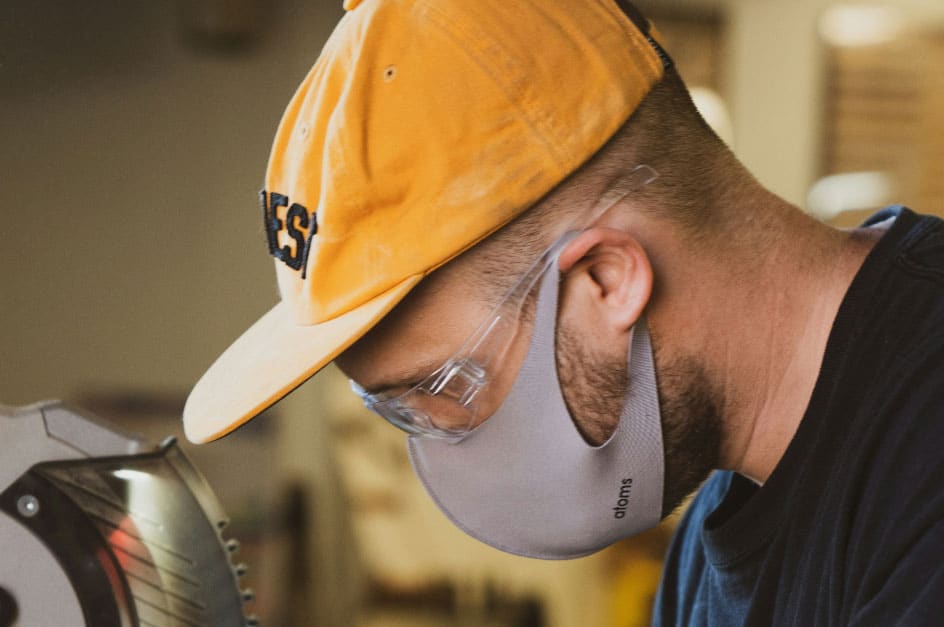An Interview with Anthony Cuccione: A New Perspective on Leadership and Safety

Anthony Cuccione is a Health and Safety Manager based in Toronto, Ontario, dedicated to enhancing workplace safety and promoting a culture of collaboration in the construction industry. Growing up in Woodbridge, Ontario, Anthony developed resilience and a team-first mentality through his involvement in house league hockey and soccer—qualities that have become central to his professional approach.
After graduating from Holy Cross Catholic Academy in 2004, Anthony pursued higher education at York University, earning an Honours Bachelor of Arts degree in 2010. Entering the field of construction health and safety without prior experience, he quickly rose through the ranks by embracing continuous learning and building trust with colleagues and clients. His efforts have earned him recognition as a leader in creating safer, more cohesive workplaces.
Beyond his professional endeavors, Anthony Cuccione is passionate about giving back to the community. He is a regular blood donor and actively supports organizations such as the Canadian Cancer Society, Sick Kids Hospital, and the Heart and Stroke Foundation.
In his personal life, Anthony enjoys sports, reading, and movies. He attributes his success to self-reflection, perseverance, and the encouragement of family and friends. Integrity, empathy, and a commitment to meaningful impact define both his career and his life.
What inspired you to focus your career on health and safety in the construction industry?
Growing up, I was always drawn to roles where I could make a tangible difference, whether it was playing sports or helping people in small ways. When I entered the construction industry, I quickly realized how important health and safety were—not just for compliance, but for protecting lives. The opportunity to create a safer environment, where workers could focus on their jobs without fear of injury, deeply resonated with me. It’s incredibly rewarding to know that the work I do helps people go home safely to their families every day.
What’s the most challenging aspect of promoting safety in the workplace?
The biggest challenge is changing mindsets. Many people view safety as a secondary concern or something that slows down productivity. Convincing teams that safety isn’t just about rules—it’s about protecting their well-being—isn’t always easy. It requires trust, consistent communication, and showing them the real-world benefits of safe practices. Once they see safety as an investment in themselves, their families, and their future, it becomes much easier to build a culture of care.
What role does leadership play in workplace safety?
Leadership sets the tone. If leaders prioritize safety, it becomes a non-negotiable value for the entire organization. A good leader doesn’t just enforce rules—they lead by example. When workers see that I’m committed to safety, whether it’s wearing the proper gear or addressing hazards immediately, it reinforces its importance. Leaders also need to listen. Workers on the front lines often have the best insights into potential risks, and valuing their input fosters collaboration and trust.
Can you describe a moment in your career where you felt you made a significant impact?
One moment that stands out was early in my career when I identified a recurring issue with workers lifting heavy materials incorrectly, leading to frequent injuries. Instead of issuing blanket directives, I worked with the team to redesign workflows and introduced ergonomic training sessions. Over time, we saw a noticeable decrease in injuries and an increase in morale. Knowing that a simple change made such a big difference for so many people was incredibly fulfilling.
How do you balance enforcing strict safety protocols with maintaining positive relationships on the job?
It’s all about communication and empathy. I never approach safety as a punishment or something to impose. Instead, I frame it as a shared goal. I take the time to explain why a protocol exists and how it benefits everyone involved. Building relationships based on trust and mutual respect helps strike that balance. When workers feel respected, they’re more likely to embrace safety measures without resentment.
What motivates you to stay committed to self-reflection and continuous learning?
I’ve always believed that there’s no finish line when it comes to personal or professional growth. Self-reflection helps me identify areas where I can improve, while continuous learning keeps me adaptable in an ever-changing field. The construction industry evolves, and so do safety regulations and best practices. Staying committed to growth ensures I’m always giving my best to the people who rely on me.
How do you approach problem-solving in high-pressure situations?
In high-pressure situations, staying calm is crucial. I start by gathering as much information as possible to understand the scope of the issue. Then, I prioritize actions based on immediate risks and long-term solutions. Collaboration is key—I involve the right people and ensure everyone understands their role in addressing the problem. It’s also important to stay adaptable, as things don’t always go according to plan.
What lessons from your childhood or upbringing influence your approach to work today?
Growing up in Woodbridge and playing house league sports taught me the importance of teamwork and resilience. Whether we won or lost, it was always about how we played together as a team. Those lessons have carried into my professional life. I approach every challenge with the mindset that success isn’t achieved alone—it’s the result of collective effort and trust.
How do you think technology is changing the future of workplace safety?
Technology is a game-changer for workplace safety. Innovations like wearable devices can monitor workers’ vitals in real time, while drones and AI can assess site risks more efficiently than ever before. Even simple tools like mobile apps make it easier for workers to report hazards instantly. The challenge is integrating these technologies in a way that complements human oversight and doesn’t replace the interpersonal connection that’s critical to building a safety culture.
What do you hope your legacy will be in the health and safety field?
I hope to be remembered as someone who genuinely cared—about the people I worked with, the industry I served, and the communities I supported. My goal has always been to create environments where safety isn’t just a rulebook, but a shared value that empowers people to work confidently. If I can inspire others to lead with integrity and prioritize safety in their own careers, that’s the legacy I want to leave behind.
Have you read?
Best cities in the world.
Largest Economies in the World by GDP (PPP).
Largest Asset Owners In The World.
Best Countries for Work-Life Balance.
Largest Economies in the World by GDP (nominal).
Bring the best of the CEOWORLD magazine's global journalism to audiences in the United States and around the world. - Add CEOWORLD magazine to your Google News feed.
Follow CEOWORLD magazine headlines on: Google News, LinkedIn, Twitter, and Facebook.
Copyright 2025 The CEOWORLD magazine. All rights reserved. This material (and any extract from it) must not be copied, redistributed or placed on any website, without CEOWORLD magazine' prior written consent. For media queries, please contact: info@ceoworld.biz








